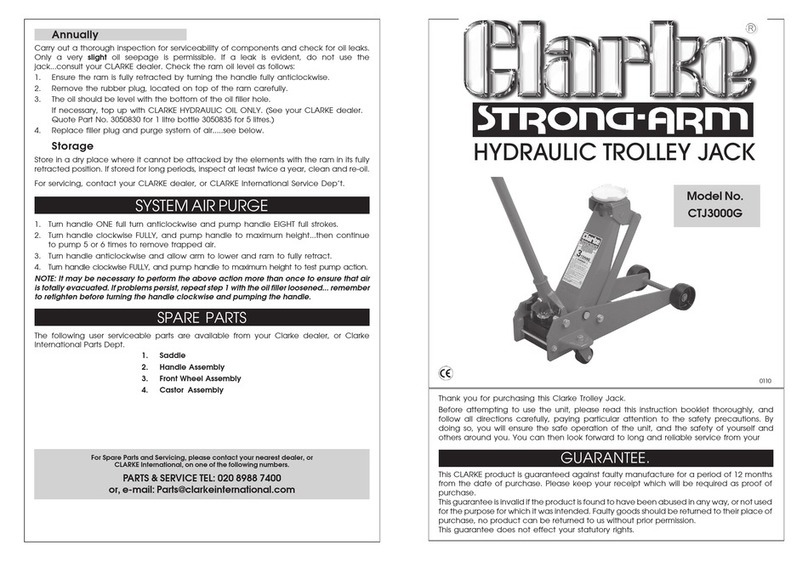
©Copyright Amkus Rescue Systems, Inc. 2016 LAR-001 May 31, 2016 Rev00
DANGER Understand manual before use. Operating AMKUS Rescue Systems without understanding
the manual, receiving proper training, and using appropriate personal protective equipment is
a misuse of AMKUS equipment. This manual does not fully address safety. Additional safety
information is published in AMKUS Safety Manual LAA-001. Obtain safety information at
www.amkus.com/
©Copyright Amkus Rescue Systems, Inc. 2016 LAA-001 April 15, 2016 Rev00
DANGER Understand manual before use. Operating AMKUS Rescue Systems without understanding the
manual, receiving proper training, and using appropriate personal protective equipment is a
misuse of AMKUS equipment. Obtain safety information at www.amkus.com/
This Safety Manual is intended to familiarize rescue workers and maintenance personnel with the safety messages of AMKUS
Rescue Systems, including powered rescue tools (rams, cutters, spreaders, combination tools), power units (electric or gasoline
driven), and powered rescue tool components (cable assemblies, hose assemblies, hose reels, etc.). The safety messages in this
publication supersede safety information appearing in AMKUS publications prior to April 2016.
This manual is intended for use with manuals published by manufacturers of prime movers (engines, electric motors, and pumps)
used in AMKUS power units.
This manual does NOT address operation or servicing of AMKUS Rescue Systems. Only competent rescue tool repair technicians
are quali¿ ed to repair AMKUS equipment. This manual should be available to all personnel involved with AMKUS equipment.
SAFETY MANUAL for AMKUS
RESCUE SYSTEMS
AMKUS RESCUE SYSTEMS
www.amkus.com 4201 Montdale Drive, Valparaiso, IN 46383-4098 USA
800-592-6587 • 219-548-5000 • Fax 630-515-8866
AMK-100R LIFTING JACK
User Information Manual
AMKUS RESCUE SYSTEMS
www.amkus.com 4201 Montdale Drive, Valparaiso, IN 46383-4098 USA
800-592-6587 • 219-548-5000 • Fax 219-476-1669
DANGER
PERSONAL RESPONSIBILITY CODE
The member companies of FEMSA that provide emergency response
equipment and services want responders to know and understand the
following:
1. Firefi ghting and Emergency Response are inherently dangerous activities
requiring proper training in their hazards and the use of extreme caution
at all times.
2. It is your responsibility to read and understand any user’s instructions,
including purpose and limitations, provided with any piece of equipment
you may be called upon to use.
3. It is your responsibility to know that you have been properly trained in
Firefi ghting and /or Emergency Response and in the use, precautions, and
care of any equipment you may be called upon to use.
4. It is your responsibility to be in proper physical condition and to maintain
the personal skill level required to operate any equipment you may be
called upon to use.
5. It is your responsibility to know that your equipment is in operable
condition and has been maintained in accordance with the manufacturer’s
instructions.
6. Failure to follow these guidelines may result in death, burns or other
severe injury.
FEMSA
Fire and Emergency Manufacturers and Service Association
P.O. Box 147, Lynnfi eld, MA 01940 • www.FEMSA.org
Thank you for choosing AMKUS Rescue Systems. Read this User
Information Manual thoroughly. If you have any questions, please
contact your local dealer or AMKUS Rescue Systems.
Please complete the tool registration form included with your
equipment and return it to AMKUS Rescue Systems. You may also
register your equipment on-line at www.amkus.com.
The serial number for your tool is identifi ed on the product label
which is located on the cylinder of the tool. Please have the
serial number available if you need to contact your local dealer or
AMKUS Rescue Systems.

























